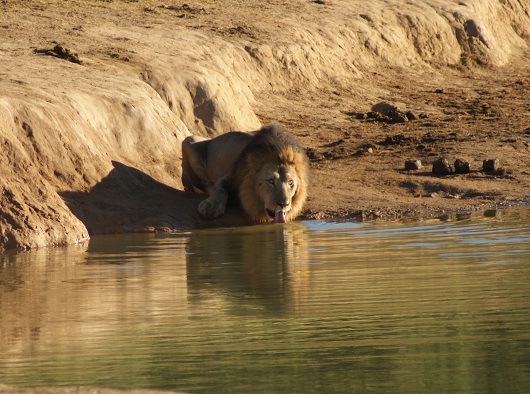I am always grateful for the indigenous plants that flower in the wild and brighten up the countryside. There are over 158 species of Delosperma or Skaapvygie (often called ice plants abroad) growing especially in the eastern parts of South Africa. This is one of them that occasionally appears in my garden. Others grow along our highways, creating carpets of white, pink or purple.
There are a number of pompon trees (Dais cotinifolia) growing in our garden – many of them self-seeded – that put on a beautiful show from November onwards. One can easily spot the trees in bloom on the fringes of indigenous forests all over the Eastern Cape landscape.
Another tree that delights the eye during our hottest months is the Vachellia karroo. It is also known as sweet thorn – certainly the fragrance of its yellow pompon-like flowers is most pleasant. Several of these trees grow at the top of the hill where I live.
Much further afield from where I am are the wild foxgloves (Ceratotheca triloba) which often grow in disturbed places throughout the eastern part of South Africa and can often be seen growing along roadsides in Mpumalanga and in KwaZulu-Natal, for example.
I often feature clivias (Clivia miniata) growing in my garden. It is wonderful seeing them blooming in the wild too, mainly in the partial shade of forested areas along the coastal areas of eastern South Africa.
Then there is this Erythrina lysistemon, also known as a coral tree, which I photograph almost every year as it grows only a few blocks away from where I live.





























